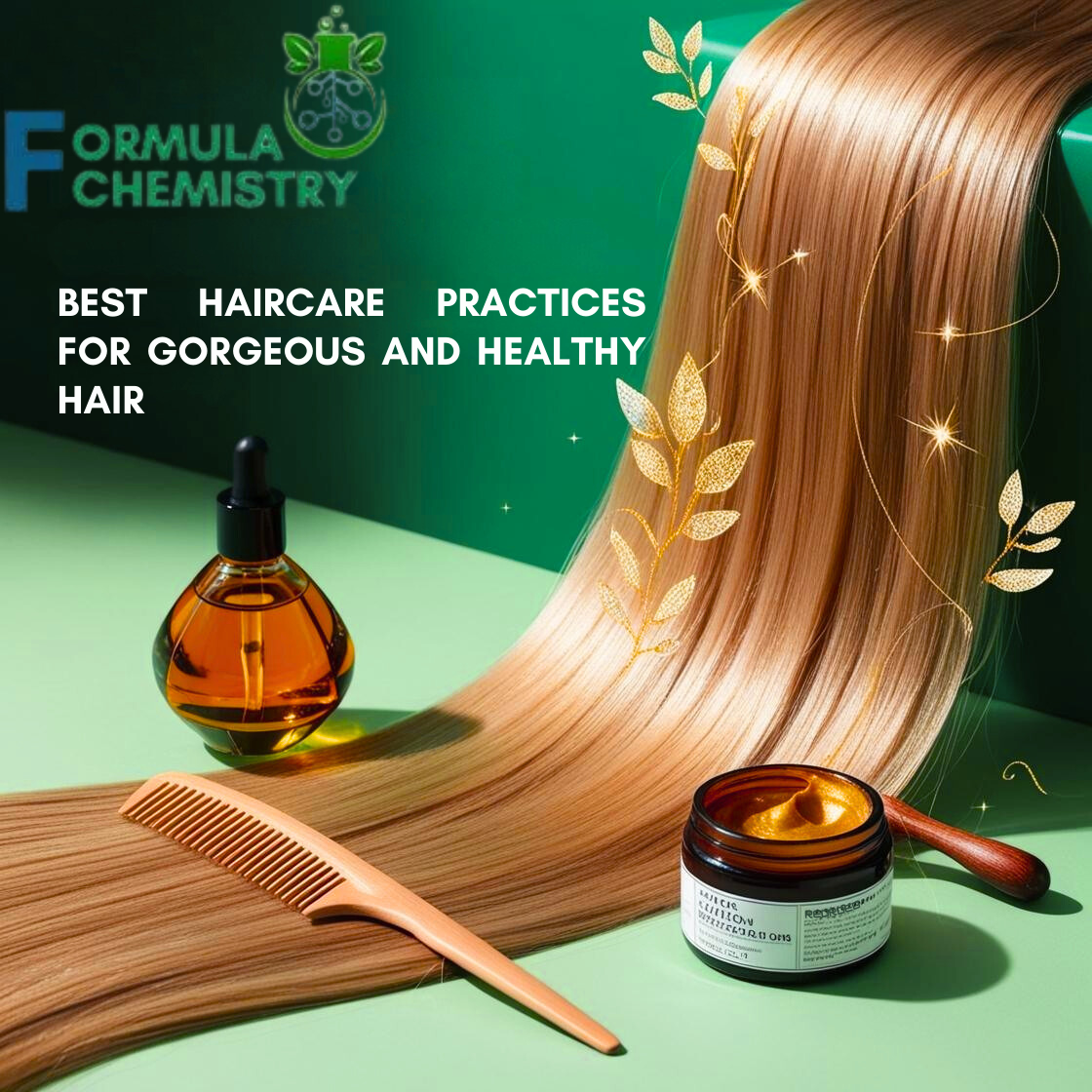Introduction
Everyone dreams of having hair that looks like it belongs in a shampoo commercial — strong, shiny, and effortlessly beautiful. But in reality, everyday factors like pollution, stress, improper product use, and heat styling can leave our strands looking dull and lifeless. Fortunately, achieving and maintaining healthy, gorgeous hair isn’t just about genetics; it’s about adopting the best haircare practice.
In this guide, you’ll discover the best haircare practices to nourish your strands, protect your scalp, and boost your hair’s natural shine and strength. Whether you have straight, wavy, curly, or coily hair, these expert-approved tips will help you elevate your haircare routine.
Understand Your Hair Type
Before diving into routines and products, it’s essential to understand your hair type. Your hair’s texture, density, and porosity dictate how it should be cared for.
Hair Types:
- Straight hair: Tends to get oily quickly, reflects shine easily, and may lack volume.
- Wavy hair: A balanced mix that can get dry at the ends and oily at the roots.
- Curly hair: Naturally dry because scalp oils struggle to travel down the hair shaft.
- Coily/Kinky hair: The most fragile hair type that requires deep nourishment and gentle handling.
Why It Matters:
Different hair types react differently to products, environmental factors, and treatments. Straight hair might get weighed down by heavy oils, while curly hair craves intense hydration. Identifying your hair type helps you choose products and best haircare practice that enhance your hair’s natural texture while addressing its unique needs.
Also, consider your hair’s porosity (how well it absorbs and retains moisture) and your scalp type (oily, dry, sensitive, or balanced) for a fully customized care routine.
Daily Haircare Practices You Should Follow
The foundation of great hair is built through consistent daily habits. Here are essential best haircare practice to follow every day:
Gentle Cleansing
Avoid over-washing your hair, as it strips away natural oils that keep hair moisturized and healthy. Wash your hair 2–3 times a week with a sulfate-free shampoo suitable for your hair type. Use lukewarm water, as hot water can weaken hair strands and cause dryness.
Conditioner Application
Always follow shampooing with a nourishing conditioner. Focus on the mid-lengths to the ends of your hair, where it tends to be driest. Avoid applying conditioner directly to your scalp, as this can lead to product buildup.
Scalp Care
A clean, healthy scalp is the foundation for healthy hair. Massage your scalp gently while washing to stimulate blood flow, which encourages hair growth. Using a lightweight scalp serum or oil can also help balance moisture levels.
Drying Techniques
Hair is most fragile when wet. Instead of rubbing it aggressively with a towel, gently pat it dry with a microfiber towel or a soft cotton T-shirt to minimize breakage and frizz.
Limit Heat Styling
Frequent use of hairdryers, straighteners, and curling irons can cause severe damage over time. When possible, let your hair air-dry or use the lowest heat setting available. Always apply a heat protectant spray before using hot tools.
Weekly Hair Treatments for Strong, Shiny Hair
Weekly treatments can rejuvenate your hair, restoring its softness, strength, and natural luster.
Deep Conditioning Masks
Once or twice a week, treat your hair to a deep conditioning mask that hydrates, repairs, and smoothens your strands. Look for masks with keratin, shea butter, or argan oil to boost moisture retention.
Hot Oil Treatments
A time-tested remedy, hot oil massages with coconut, olive, or argan oil nourish both the scalp and hair. Warm the oil slightly, massage it into your scalp, and leave it for at least 30 minutes before washing it out. This helps improve scalp health and reduces dryness.
Protein Treatments
Monthly protein treatments strengthen hair strands by repairing damaged cuticles, particularly beneficial for chemically treated or heat-styled hair. These treatments rebuild hair structure, making it resilient to breakage.
Scalp Exfoliation
Once a week, exfoliate your scalp to remove dead skin cells and product buildup. You can use a gentle scalp scrub or a DIY mix of coffee grounds and yogurt to keep your scalp healthy and flake-free.
Best Haircare Products to Invest In (2025 Picks)
Choosing the right products and best haircare practice ensures your hair receives targeted care based on its needs.
Essentials:
- Shampoo: A sulfate-free, pH-balanced formula suitable for your hair type. Consider clarifying shampoos once a month to detox your scalp.
- Conditioner: Lightweight conditioners for oily or fine hair and richer, more hydrating ones for dry, curly, or coily hair.
- Hair Serum or Oil: Use argan oil or silicone-free serums to add shine and manage frizz.
- Leave-in Conditioner: Keeps your hair moisturized and detangled throughout the day.
- Heat Protectant Spray: Essential for anyone using blow dryers or styling tools.
Trending Ingredients for 2025:
- Biotin, collagen, and keratin for strengthening.
- Rosemary and caffeine for promoting scalp health and hair growth.
- Plant-based silicones for smoothness without buildup.
Why These Haircare Mistakes Are Harmful
Over-washing
Washing your hair too often strips away the scalp’s natural oils (sebum), which are essential for keeping the hair shaft moisturized and protected. Without these oils, hair becomes dry, brittle, and prone to breakage. It can also trigger the scalp to overcompensate by producing even more oil, leading to a greasy scalp and dry ends.
Towel Rubbing
When hair is wet, it’s in its most fragile state. Rubbing it with a towel creates friction, which roughens up the hair cuticle (the outer layer of each strand). This leads to frizz, split ends, and breakage. A better alternative is gently blotting or wrapping hair in a microfiber towel or soft cotton T-shirt to absorb excess water without damage.
Neglecting Scalp Health
A healthy scalp is the root of healthy hair. If the scalp is clogged with product buildup, excess oil, or dead skin, it can block hair follicles, reducing oxygen and nutrient supply to the hair roots. This leads to conditions like dandruff, scalp acne, itchiness, inflammation, and hair thinning. Regular cleansing, exfoliating, and nourishing treatments help maintain an ideal scalp environment for hair growth.
Excessive Heat Styling
High heat weakens the protein structure of hair (primarily keratin), making it fragile and prone to breakage, split ends, and dullness. Repeated heat exposure without protection can permanently damage the hair cuticle, causing long-term loss of shine and elasticity. Limiting heat styling, using heat-protectant sprays, and opting for air-drying whenever possible preserves hair integrity.
Using Unsuitable Products
Different hair types and scalp conditions require specific formulations. For example:
- Heavy oils or rich creams can weigh down fine or oily hair, making it flat and greasy.
- Harsh, drying shampoos can leave curly or textured hair dehydrated, leading to frizz and breakage.
- Products with silicones can build up on the scalp over time, suffocating hair follicles and reducing hair health.
Using targeted, hair-type-specific products ensures hair receives the right balance of moisture, strength, and protection.
Conclusion
Achieving healthy, gorgeous hair isn’t about following trends or using the most expensive products — it’s about consistency, understanding your hair’s needs, and practicing gentle, effective haircare habits daily. By knowing your hair type, using the right products, avoiding common mistakes, and nourishing your scalp, you can transform your hair’s health and appearance.
Ready to experience your best hair yet? Start incorporating these best haircare practice today and watch your hair thrive!

